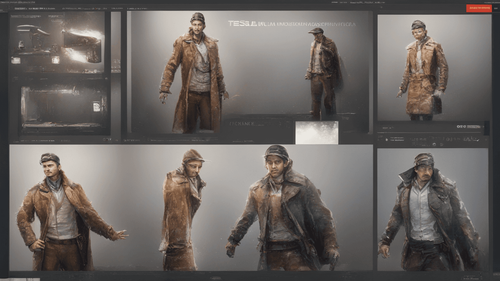
Introduction
In the realm of autonomous driving, the evolution of Tesla's Autopilot technology stands as a beacon of innovation. Spearheading this development is Andrej Karpathy, an influential figure who has played a pivotal role in shaping the course of autonomous vehicles. This article delves into the captivating journey of Tesla Autopilot, accompanied by the expertise of Andrej Karpathy. From its inception to its current state, we will explore the technology's achievements, challenges, and its profound impact on the automotive industry.
Andrej Karpathy: A Driving Force in Autopilot Advancements
Tesla's Autopilot system wouldn't be what it is today without the remarkable contributions of Andrej Karpathy. As the Director of AI and Autopilot Vision at Tesla, he has overseen the development of key components that enable self-driving capabilities. Karpathy's expertise in computer vision, deep learning, and neural networks has been instrumental in pushing the boundaries of autonomous driving.
The Genesis of Tesla Autopilot
The journey of Tesla Autopilot began with a vision to make driving safer and more convenient. Leveraging sensors, cameras, and powerful processors, the technology was designed to assist drivers by handling certain tasks and enhancing overall road safety. The early days were marked by experimentation and learning, setting the stage for what would become a transformative force in the automotive industry.
Advancements in Autopilot Capabilities
Under Andrej Karpathy's guidance, Tesla Autopilot has evolved from basic driver-assist features to a comprehensive self-driving suite. The technology now boasts features like Traffic-Aware Cruise Control, Autosteer, and Navigate on Autopilot, allowing vehicles to autonomously change lanes, navigate complex highway interchanges, and even exit ramps. These advancements reflect Karpathy's commitment to pushing the boundaries of what's possible in autonomous driving.
Enhancing Safety Through Deep Learning
At the heart of Tesla Autopilot's success lies deep learning, a field in which Andrej Karpathy excels. By training neural networks on vast amounts of data, Tesla's vehicles have gained the ability to interpret their surroundings and make split-second decisions. This has translated into enhanced safety, as Autopilot-equipped cars can detect potential collisions, identify pedestrians, and respond to unpredictable road scenarios.
The Role of AI in Autopilot's Evolution
Artificial Intelligence (AI) has been a driving force behind the evolution of Tesla Autopilot. With Karpathy's guidance, AI-powered algorithms have transformed the technology into a sophisticated self-driving system. These algorithms process real-time data from cameras and sensors, enabling vehicles to navigate complex environments, recognize traffic signals, and adapt to changing road conditions.
Challenges on the Road to Autonomy
The path to fully autonomous driving is not without its challenges. Andrej Karpathy and his team have been met with regulatory hurdles, technical complexities, and ethical considerations. Striking the balance between technological advancement and safety remains a paramount concern, and Tesla's approach under Karpathy's leadership reflects a commitment to addressing these challenges head-on.
FAQs
How does Tesla Autopilot work?
Tesla Autopilot utilizes a combination of cameras, sensors, and advanced algorithms to interpret the vehicle's surroundings. This allows the car to navigate, change lanes, and respond to traffic while providing assistance to the driver.
Is Tesla Autopilot fully autonomous?
While Tesla Autopilot offers advanced driver-assist features, it is not yet fully autonomous. It requires driver supervision and intervention in certain situations. Tesla's Full Self-Driving (FSD) package aims to achieve higher levels of autonomy, but regulatory approvals and technological advancements are ongoing processes.
What role does Andrej Karpathy play in Autopilot development?
Andrej Karpathy is the Director of AI and Autopilot Vision at Tesla. He leads the development of the neural networks and algorithms that power Autopilot. His expertise in computer vision and deep learning has been instrumental in enhancing the technology's capabilities.
How does deep learning enhance Autopilot's safety?
Deep learning enables Autopilot-equipped vehicles to analyze and understand their surroundings based on real-time data. This allows the system to identify potential risks, pedestrians, and other vehicles, leading to quicker and more accurate responses that enhance overall road safety.
What are the regulatory challenges in autonomous driving?
Regulatory challenges in autonomous driving revolve around ensuring the technology's safety and compliance with existing laws. Achieving a balance between innovation and safeguarding public interest is a complex task that requires collaboration between the automotive industry and regulatory bodies.
What does the future hold for Tesla Autopilot?
The future of Tesla Autopilot under Andrej Karpathy's guidance holds the promise of further advancements in autonomous driving. As technology continues to evolve, we can expect improvements in self-driving capabilities, safety features, and the potential for wider adoption of autonomous vehicles.
Conclusion
In the grand narrative of autonomous driving, the contributions of Andrej Karpathy and Tesla's Autopilot technology shine brightly. From its genesis to its current state, Autopilot's journey is one of innovation, determination, and groundbreaking achievements. Under Karpathy's expertise, the technology has transformed from a concept into a tangible force that is reshaping the future of transportation. As we look ahead, the continued collaboration between human ingenuity and cutting-edge technology holds the key to realizing the full potential of autonomous driving and making our roads safer for everyone.